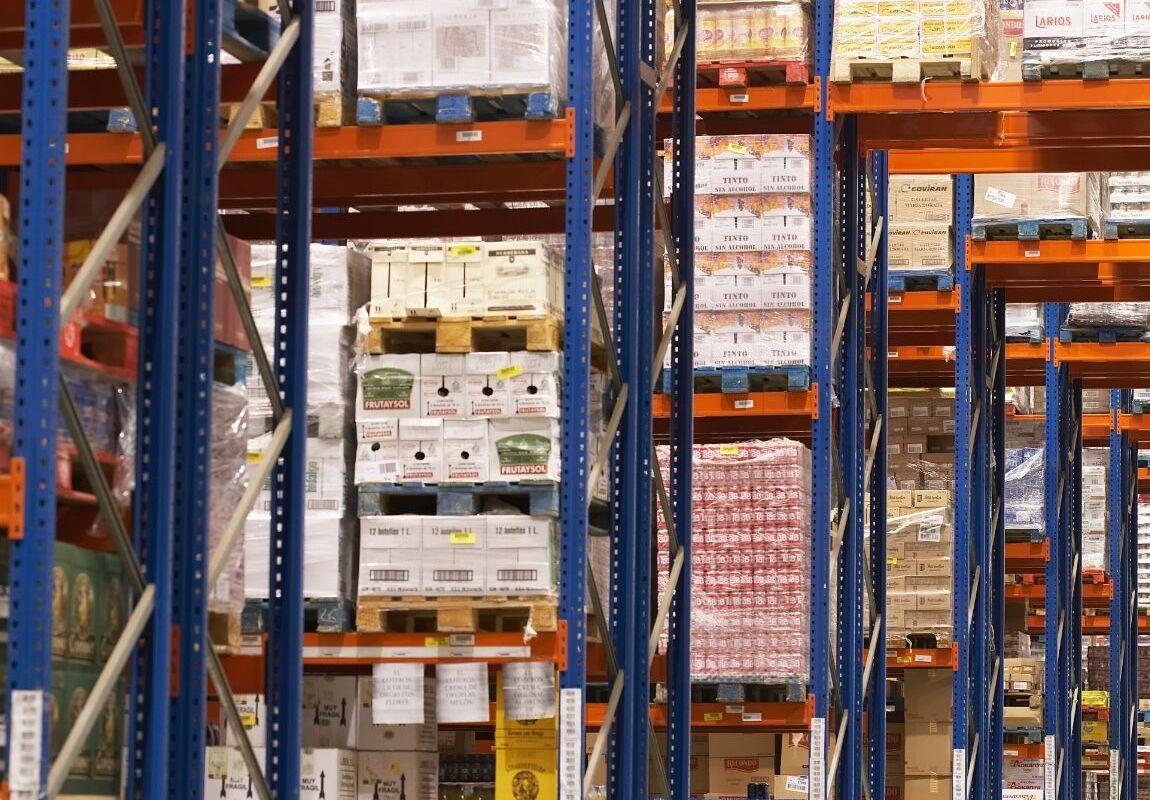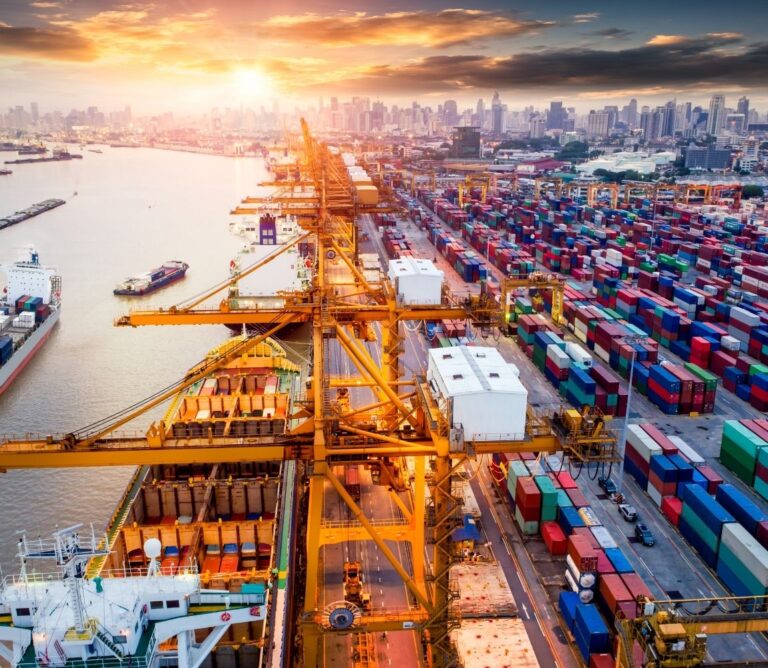Third-Party Fulfillment Explained: How to Outsource Smartly & Cut Costs

Outsourcing order fulfillment can shrink costs, speed delivery, and free your team to focus on growth, but only if you pick the right model and partner. In this guide we break down what third-party fulfillment (3PL) really is, compare it to in-house operations with concrete pricing examples, and give a simple checklist to help you decide when to outsource. Read on for regional network tips, a sample ROI worked example, and the quick checklist you can download to evaluate 3PLs side-by-side.
What is Third-Party Fulfillment?
Definition & Services
Third-party fulfillment (3PL fulfillment) allows e-commerce and retail brands to outsource the operational complexities of order fulfillment. This includes:
- Inventory storage: Secure warehousing of products in climate-controlled or specialized facilities.
- Pick and pack: Staff pick individual SKUs per order and pack them according to brand requirements.
- Shipping: Coordination with carriers to ensure fast and cost-efficient delivery.
- Returns management: Handling reverse logistics, restocking, and refunds.
Many businesses underestimate the operational cost of in-house fulfillment. Outsourcing these tasks to a 3PL can free up significant time and reduce errors.
Warehouse vs Fulfillment Center
A warehouse typically stores inventory without handling daily order processing. Fulfillment centers actively manage order picking, packing, shipping, and returns. This difference is crucial for brands aiming for fast delivery.
Why Brands Outsource Fulfillment — Top Benefits
1. Faster Delivery & Lower Last-Mile Cost
Using strategically located 3PL fulfillment centers can reduce transit time across the U.S. drastically. For example:
- Single fulfillment site → average 5–6 days coast-to-coast delivery
- Multi-site fulfillment → 2-day delivery to ~90% of the population
Lower last-mile costs mean higher margins. A 3PL near major metropolitan areas reduces shipping distance and carrier fees.
2. Variable vs Fixed Cost Benefits
In-house fulfillment requires fixed expenses like warehouse rent, equipment, and labor. 3PLs convert these into variable costs per order, allowing brands to scale efficiently without heavy upfront investment.
3. Scalability for Peak Seasons
Peak seasons like Black Friday, Cyber Monday, and holidays can overwhelm internal logistics. 3PLs provide flexible staffing and space to handle spikes, preventing shipping delays and customer complaints.
Benchmark Numbers:
- Delivery speed improvement: 2–3 days faster for 80–90% of U.S. customers
- Peak season capacity: Handle 50% more orders without increasing staff
3PL vs In-House Fulfillment: Cost Comparison
Example Table with Detailed Line Items
| SKU Type | Storage | Receiving | Pick & Pack | Packaging | Shipping | Returns | Software Fee | Total Cost/Order |
| Small/Light | 0.50 | 0.10 | 1.00 | 0.50 | 3.00 | 0.50 | 0.20 | $5.80 |
| Medium | 0.70 | 0.15 | 1.50 | 0.75 | 5.00 | 0.75 | 0.25 | $9.10 |
| Large/Oversize | 1.20 | 0.25 | 3.00 | 1.00 | 10.00 | 1.50 | 0.30 | $17.25 |
Worked ROI Example
Suppose a mid-size e-commerce brand processes 1,000 orders per month with an average order value of $75.
In-house fulfillment:
- Monthly labor + storage + shipping: $10,000
3PL fulfillment:
- Monthly per-order fees: $7,500
Monthly savings: $2,500 + faster shipping + less staff time spent on logistics.
This example shows that even moderate order volumes can justify outsourcing.
Single vs Multi-Site Tradeoffs
- Single-site: Easier to manage, lower overhead, slower shipping to far regions.
- Multi-site: Higher setup complexity, faster shipping, reduced last-mile costs, better customer satisfaction.
Suggested Map for 2-Day Delivery:
- East Coast: NJ/PA
- Midwest: IL/OH
- South: TX/GA
- West Coast: CA/NV
Rule-of-Thumb:
- <1,000 orders/month → 1 center
- 1,000–5,000 orders/month → 2 centers
- 5,000 orders/month → 3+ centers
Strategically placing fulfillment centers reduces shipping costs and meets consumer expectations for fast delivery.
How to Choose a 3PL: 7-Point Checklist
Selecting the right third-party logistics (3PL) provider can make a major difference in your operational efficiency and customer satisfaction. Use this 7-point checklist to help you choose the logistics partner that best fits your business needs:
- Integration & Tech
Choose a 3PL that offers strong integrations with platforms like ERP systems, Shopify, WooCommerce, and Amazon. Automated data syncing and real-time inventory updates help reduce manual errors and streamline order management. Also, make sure the 3PL’s software is user-friendly and supports API connections for flexible automation. - Location & Network Coverage
Warehouse locations and network coverage directly affect delivery speed and shipping costs. A 3PL with strategically located warehouses close to your customer base can shorten transit times and reduce expenses. If you serve national or international markets, ensure your provider has a wide and reliable logistics network. - Pricing Transparency & Minimums
The pricing structure should be clear and easy to understand. Be sure to ask about hidden fees, additional storage charges, or minimum order requirements before signing any agreement. Transparent pricing helps you budget accurately and determine if the 3PL matches your order volume and growth plans. - SLAs, KPIs, and Reporting
Service Level Agreements (SLAs) and Key Performance Indicators (KPIs) allow you to track and evaluate your 3PL’s performance. Metrics like delivery speed, order accuracy, and return rates should be regularly reported, giving you data-driven insight to improve your logistics operations. - Returns & Reverse Logistics
A well-managed return process strengthens customer loyalty. Ask how the 3PL handles returns, how quickly products are restocked, and what return-related costs apply. Efficient reverse logistics can reduce expenses, minimize delays, and ensure a positive customer experience even after a return. - Scalability & Seasonal Capacity
As your business grows or experiences seasonal peaks—such as during the holidays—your 3PL must be able to adapt. Look for a provider with flexible warehouse space, additional staffing options, and proven ability to handle high order volumes without compromising quality or speed. - Customer Support & Account Management
Strong customer support ensures that issues are resolved quickly. A dedicated account manager or a reliable contact person helps keep communication clear and operations smooth. Responsive, solution-oriented support is essential for maintaining a seamless partnership with your logistics provider.
Common Pricing Models & Red Flags
Choosing a 3PL partner isn’t just about performance — it’s also about understanding how you’ll be charged. Transparent and predictable pricing helps you manage logistics costs effectively and prevents surprises down the line. Here’s a breakdown of common pricing models and red flags to watch out for:
Common Pricing Models
- Per-Order Pricing
This is one of the most common models. You’re charged a flat rate or a variable fee for each order fulfilled. It’s easy to forecast and works well for businesses with stable order volumes. However, make sure to confirm whether this includes all steps (picking, packing, labeling, etc.) or if additional fees apply. - Subscription or Minimums
Some 3PLs require a monthly subscription or enforce a minimum order volume. This model can benefit businesses with consistent sales, as it often includes bundled services. However, if your sales fluctuate seasonally, minimum commitments can lead to unnecessary costs during slower months. - Storage Tiers
Warehousing fees are often based on how much inventory you store and how long it stays in the warehouse. Pricing may be calculated per pallet, shelf, or cubic foot. It’s important to understand how storage fees scale when inventory increases and whether long-term storage incurs additional charges. - Surcharges and Handling Fees
Many 3PLs apply extra fees for special situations, such as:
- Pick and pack fees (charged per item or per order)
- Dimensional weight charges (based on package size, not just weight)
- Special handling or fragile items
- Returns processing
Understanding these surcharges upfront prevents surprises on your invoice and helps you compare providers fairly.
- Pick and pack fees (charged per item or per order)
Red Flags to Watch For
- Unclear or Hidden Surcharges
If a 3PL doesn’t clearly explain its pricing breakdown or uses vague terms like “miscellaneous fees,” that’s a major warning sign. Transparency is key — you should be able to see exactly what each fee covers. - Long Minimum Contract Terms
Some providers lock clients into long-term contracts with strict cancellation policies. Flexible agreements or short trial periods are generally safer, especially if you’re testing a new 3PL relationship. - Lack of Integration Options
A 3PL without integrations for platforms like Shopify, Amazon, or your ERP system will slow down your operations and increase manual work. Seamless tech integration is essential for maintaining accuracy and efficiency.
Case Study / Mini Example
Before Partnering with a 3PL:
- Average shipping cost: $12 per order
- Average delivery time: 4 days
- Internal team: 2 full-time employees dedicated solely to packing and shipping
After Partnering with a 3PL:
- Average shipping cost: $7 per order
- Average delivery time: 2 days
- Internal operations freed up: 40 hours per month
- Team members reallocated to marketing, customer service, and growth initiatives
This example illustrates how outsourcing fulfillment to a capable 3PL can lead to significant cost savings, faster deliveries, and improved operational efficiency. Instead of being bogged down by packing and logistics, your team can refocus on what truly drives your business forward — growth and customer satisfaction.
Implementation Roadmap: How to Pilot a 3PL
30 Days: Choose partner, test a small SKU selection
60 Days: Expand to most SKUs, refine packing and labeling
90 Days: Full cutover, review KPIs, adjust workflows
Conclusion: Outsource Smart, Scale Faster
Third-party fulfillment isn’t just about outsourcing logistics — it’s about building a smarter, more scalable business. By partnering with the right 3PL fulfillment provider, brands can cut shipping costs, speed up delivery, and focus internal resources on growth instead of daily operations. Whether you’re handling 500 or 5,000 orders a month, a data-driven 3PL strategy helps you stay competitive, meet customer expectations for 2-day delivery, and maintain healthy margins. Take the time to compare 3rd party fulfillment solutions side-by-side, run the ROI math, and start small with a pilot program. The payoff is clear: streamlined operations, happier customers, and more time to grow your business.
Frequently Asked Questions (FAQ) – OLIMP Warehousing
Q: What is third-party fulfillment?
Third-party fulfillment (3PL) means outsourcing storage, picking, packing, shipping, and return handling to a specialist provider so your team can focus on product and growth.
Q: How much does 3PL cost per order?
$5–$20/order depending on SKU size, shipping distance, and services.
Q: When should I outsource fulfillment?
Consider outsourcing when you need faster delivery, predictable variable costs during peaks, and to avoid high capital expenses for warehouse automation — commonly at 1,000–5,000 orders/month, depending on SKU complexity.
Q: How many fulfillment centers do I need in the U.S.?
For most nationwide DTC brands, 2–4 strategically placed centers (East, Midwest, South, West) balance cost and 2-day delivery coverage — exact need depends on order volume and customer distribution.
Q: What are the red flags when choosing a 3PL?
Opaque pricing, no integration options, weak reporting, long contract lock-ins, and poor return handling are common red flags.
You may be interested in

What Are The Main Benefits Of Urban Distribution Centers?
What are distribution centers? A distribution center is a logistics facility designed to store, manage, and efficiently distribute goods to various destinations, such as retail stores, wholesalers, or directly to customers. These centers are essential in the supply chain, acting as hubs for receiving, organizing, and dispatching products to ensure timely delivery. Their strategic locations […]

Top 5 Challenges in Finding a Warehouse & How to Overcome Them
Finding the right warehouse can be stressful and time-consuming, especially with logistics, availability, and cost challenges. Many businesses struggle to find storage and distribution solutions on their own. Here are five common problems and how to solve them. 1. Limited Availability & Location Constraints Businesses often struggle to find warehouse space in strategic locations that […]

What Are the 5 Types of Logistics? A Complete Guide for Businesses
Logistics is how products, information, and materials actually move through a supply chain—from suppliers, to warehouses, to customers, and even back again. For freight brokers, carriers, shippers, retailers, and manufacturers, understanding the five main types of logistics is essential to controlling costs, improving delivery performance, and keeping customers happy. In this guide, we break down […]
Ready to streamline your warehousing needs?
Request a quote today and discover how OLIMP's tailored solutions can optimize your operations